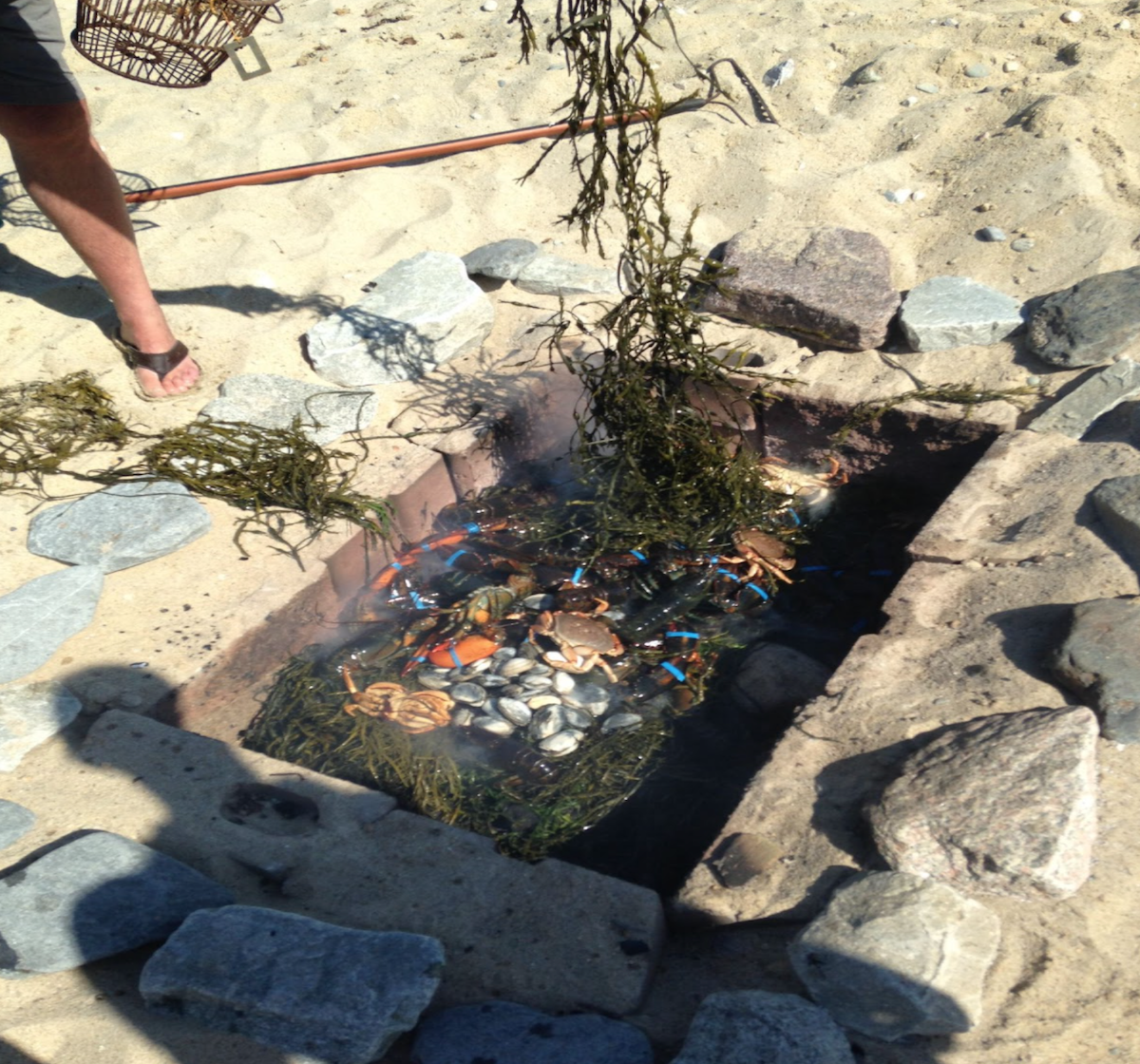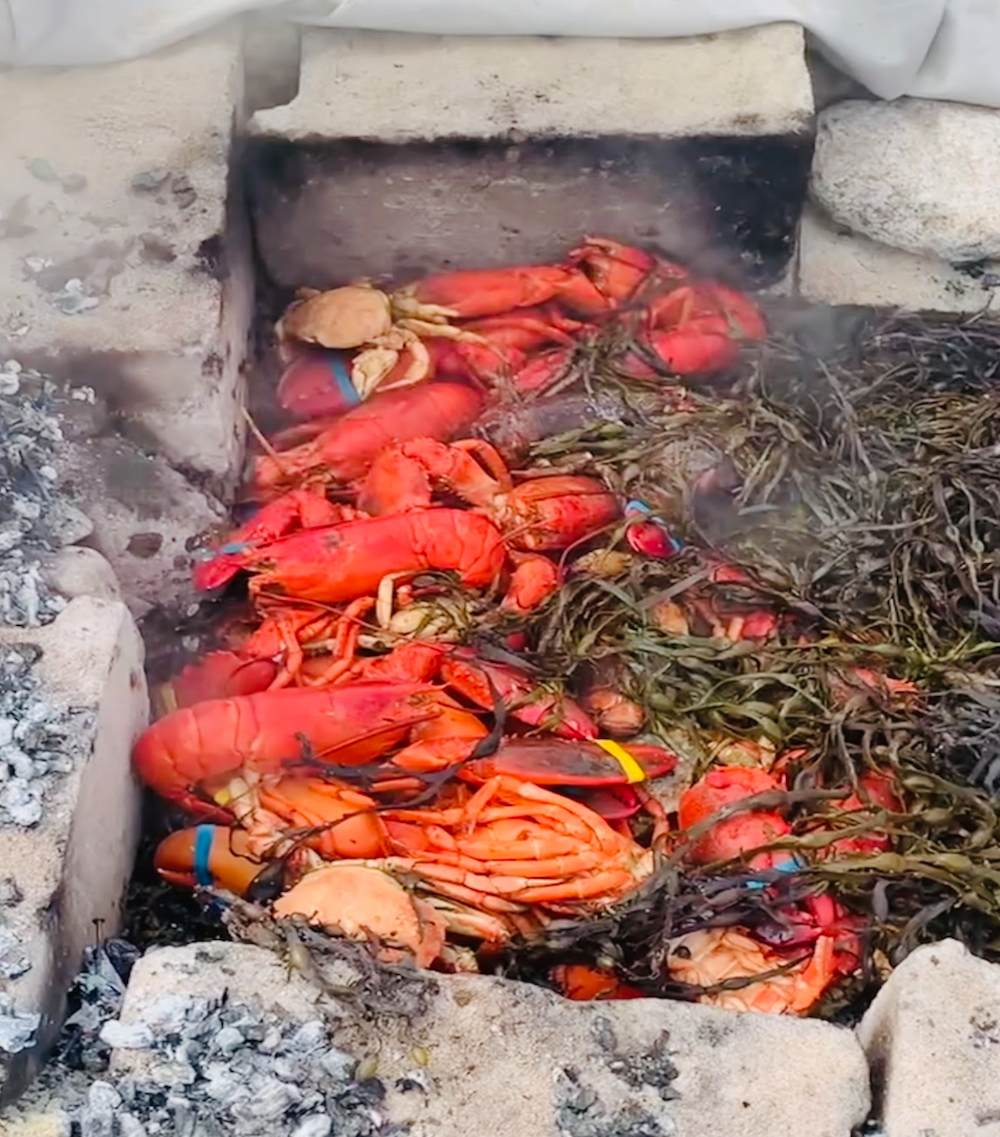One summertime activity I always look forward to is the clambake. I often equate a clambake to the "Thanksgiving of the summer" due to the amount of food that comes with them.
The annual clambake that I like to put on each year generally coincides with the Fourth of July. Everyone gets together for food, fishing and fun - so why not put on a cooking show before the fireworks begin? In my last article, Getting started with Lobstering, I showed you how to catch those delicious crustaceans, now it’s time to eat them!
Just like lobstering, a clambake is a lot of work, but it's well worth the strenuous effort when you taste the difference on your plate. In this article, I’ll show you the details about how I like to do a summer clambake on the beach.
Step 1: Time to dig!
There are different methods for doing a clambake, such as cooking over an open flame with a steel plate on top, cooking in a shallow hole in the ground with sand on top, plus others.
I prefer to cook on a beach with cinder blocks in the sand. Cinder blocks create an oven effect which I find to be a better cooking alternative compared to other methods.
I first start by measuring out on the beach a 2’x4’ rectangle in the sand, and then I start digging.

Please note that some towns have laws that require you to have a permit in order to do a clambake on the beach, so do your research before partaking in a clambake (especially on a public beach).
Once I get to about 3 ½ - 4 feet in the sand (depending on the size of the cinder blocks) I begin to lay my cinder blocks out. It does not have to look pretty, like an expensive driveway wall. The cinder block "oven" just needs to be able to retain heat.
Once the labor intensive part is complete, you need to lay large rocks evenly throughout the bottom of your pit. The rocks are an important part of the steaming process, otherwise you’ll lose a lot of heat when it's time to cook.
Step 2: Light it up
Now that we have our oven, it's time to turn it on. I only use wood logs for my clambakes. I do not use scrap pallets, as we save those for bonfires at night.
You will want to continually have a fire going for about 3-4 hours, which gives the pit and rocks plenty of time to build up heat. From my experience, there is no magical temperature to keep your clambake at, so long as it's had enough time to create a bed of embers at the bottom of your pit.

Step 3: Prep the oven
Now that we have our oven set, it's important that we have all the necessary items we need in order to have a clambake.
The first item you’ll want to have is a canvas tarp. You can buy these at any hardware store just like your cinder blocks. You’ll want a tarp that is able to cover the entire pit. It is important to let this tarp soak in a bucket of water overnight or else it could burn.
Next, gather your rockweed. This is a crucial component to the clambake. It gives the food a distinct flavor which makes it taste delicious!
Depending on the amount of food, I will have 3-5 five gallon buckets full of rockweed. Extra hands make the work much easier so I’d recommend enlisting a sous chef to help you with this process.


Thanks for the insights and suggestions!!!!
I can smell and taste it now. From being a teenager in the 70’s to adult, I’ve worked on a lot of local clambakes. The largest was for just under 600 people. A friend of mine has a camp in western maine and we put on a clambake for just over a hundred people for 10 years until Covid arrived. As you said, it’s a lot of work but putting it together with friends is half of the fun. Be sure someone Carrie’s on the tradition.
Sounds like an amazing party! Having 100 people at a clambake must be quite the production to say the least. Sounds like a fun time and I hope you are able to get it going again post-Covid.